Modern lie detection combines science and scrutiny, revealing a complex web of deceit in human behavior. Traditional methods, from ancient trials to polygraphs, often miss the mark, while AI technologies emerge as promising tools, recognizing patterns and improving accuracy. However, interpretation of cues like micro-expressions remains challenging and context-dependent. Misleading results can endanger innocents, raising ethical concerns around privacy and bias. Discover how these elements intertwine in the ongoing quest for truth versus trickery.
Key Takeaways
- Modern lie detection has evolved from superstitious methods to advanced AI technologies, improving accuracy and objectivity in identifying deceit.
- Polygraphs, though historical, have high false-positive rates and struggle to differentiate between innocence and guilt, often misleading investigators.
- AI algorithms analyze verbal and nonverbal cues with approximately 69% accuracy, outperforming human judges in lie detection tasks.
- Observable signs of deception, like micro-expressions, require careful interpretation as emotional responses can be confused with anxiety rather than lying.
- Ethical implications surrounding AI use in lie detection include privacy concerns, consent issues, and the need for guidelines to ensure fair implementation.
The Evolution of Lie Detection Techniques
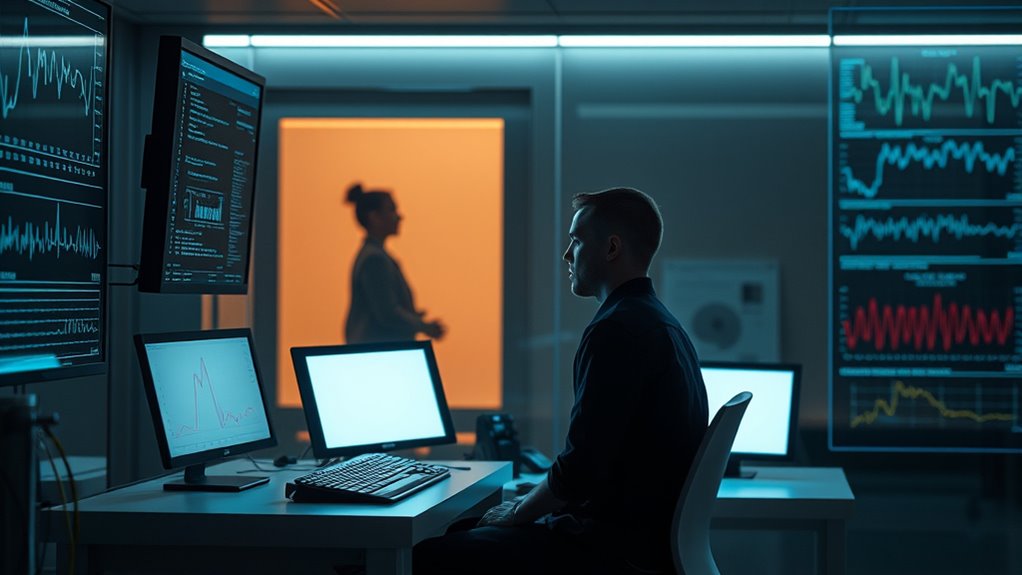
Throughout history, humans have sought ways to uncover deception, stemming from ancient methods like trial by ordeal to modern technological innovations.
Early lie detection methods relied on superstition, such as chewing dry rice in China, lacking any scientific basis. Fast forward to the early 20th century, the polygraph emerged, attempting to gauge physiological arousal through heart rate and skin conductance. However, its reliability remains disputed due to high false-positive rates.
Today, advanced techniques incorporate psychological principles and AI, analyzing subtle behaviors for deception detection. Cognitive load interviews show promise, focusing on the mental effort needed to fabricate stories, but still require refinement.
Despite these advancements, a single reliable method hasn’t surfaced, highlighting the complexities of human behavior.
The Complexity of Human Deceit

As you explore the intricacies of human deceit, you’ll discover that lying isn’t just a simple act but a complex interplay of cognitive and physiological responses. Each individual reacts differently, influenced by their background and the context of the lie.
While lie detection technology aims to detect deception through verbal and body language cues, there’s no foolproof method available. Common assumptions, like gaze aversion indicating dishonesty, have been debunked, leading to misinterpretations.
Additionally, techniques like polygraph tests often struggle to differentiate between innocent individuals and the guilty, resulting in high error rates. Although advances in AI seek to enhance accuracy, the current limitations illustrate just how challenging it’s to truly understand and identify human deceit.
Historical Methods of Assessing Truthfulness
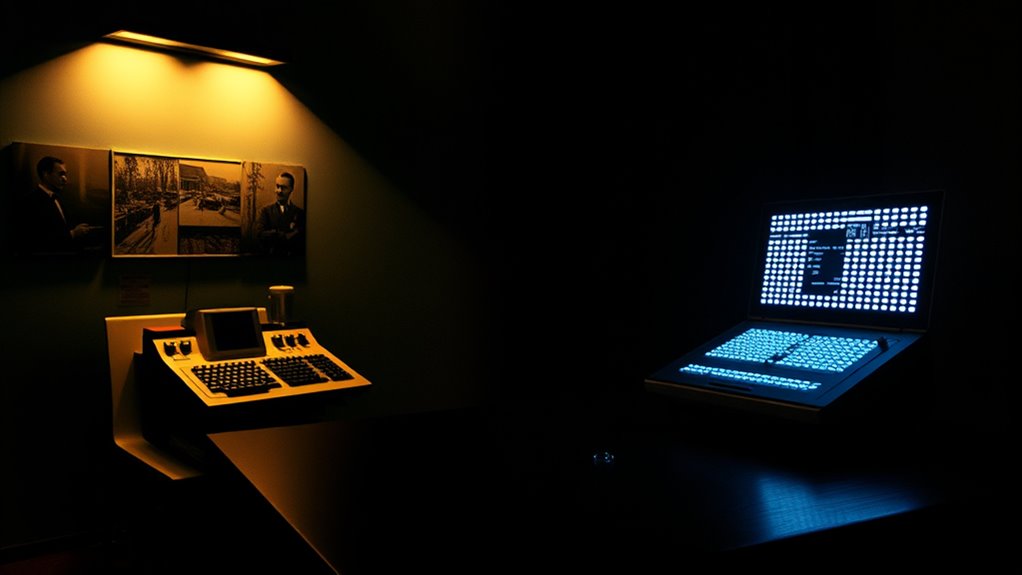
When it comes to evaluating truthfulness, ancient civilizations employed a variety of intriguing methods that often blended superstition with rudimentary observation.
In ancient China, for example, people believed that chewing dry rice could reveal guilt; if grains stuck, it indicated deceit.
Meanwhile, in Rome, the Bocca della Verità was a stone mask thought to expose liars, with legends suggesting dire consequences for falsehoods.
Medieval Europe relied on trial by ordeal, where individuals faced dangerous tests like fire or water to prove their innocence, often suffering severe injuries.
Similarly, ancient Greece used physiological indicators, like rapid pulse rates, to assess deceit.
These historical methods, while fascinating, lacked scientific validation, paving the way for more reliable approaches in modern times.
The Limitations of Modern Lie Detection Tools
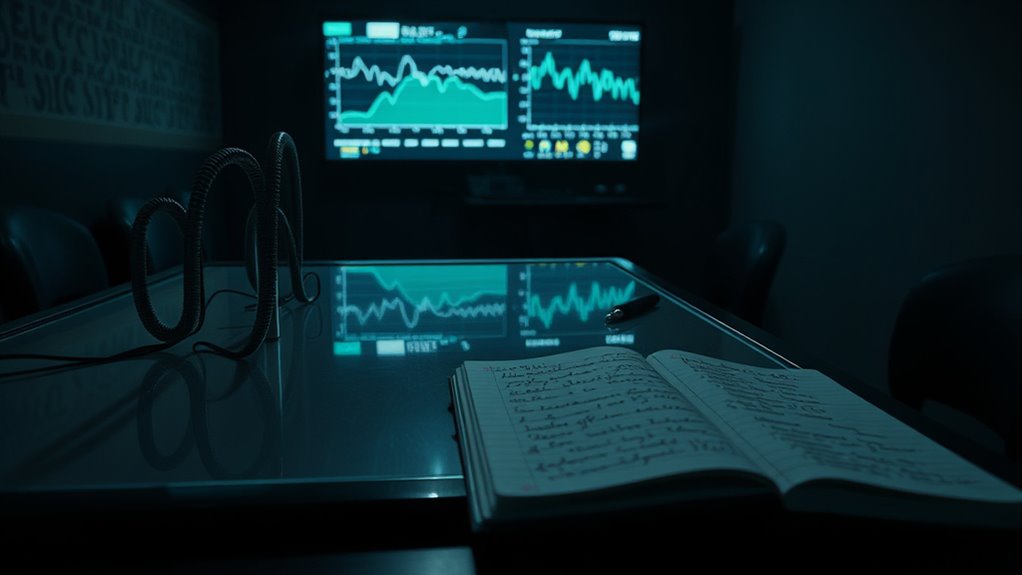
Modern lie detection tools, like polygraphs, often give misleading results, leading to serious consequences for innocent people.
You might also be surprised to learn that cultural beliefs about specific nonverbal cues as indicators of lying are mostly myths.
As you explore these limitations, you’ll see just how complex and unreliable detecting deceit can be.
Inaccuracy of Polygraphs
Though many believe polygraphs are reliable lie detection tools, their inaccuracy is a significant concern. The physiological responses they measure, like heart rate and skin conductance, can easily mislead.
Here are some alarming facts about polygraphs:
- Their false-positive rates often exceed 50%, putting innocent lives at risk.
- Emotional states like anxiety can mimic signs of deception, leading to wrongful accusations.
- Law enforcement tends to overestimate their ability to read nonverbal cues, which lack scientific backing.
- Many legal cases reveal how polygraph results have wrongfully convicted individuals based on flawed accuracy.
With no definitive physiological marker for deception, it’s clear that polygraphs can’t be trusted as reliable tools for discerning truth from lies.
Cultural Misinterpretations of Cues
Cultural beliefs shape how you interpret nonverbal cues, often leading to significant misunderstandings in lie detection. For instance, gaze aversion, commonly seen as a sign of deceit, varies across cultures and may simply indicate discomfort or respect.
Emotional responses to lying differ widely, complicating standardized methods intended to detect lies. High false-positive rates in polygraphs further emphasize the challenge, as physiological reactions can arise from anxiety rather than dishonesty.
Individual differences, such as personal anxiety levels, add another layer of complexity, making it nearly impossible to establish a universal baseline for truthfulness.
Ultimately, the intricate nature of human interactions and psychological phenomena requires a nuanced understanding of cultural and situational contexts to avoid misinterpretations.
Neurological Insights Into Lying
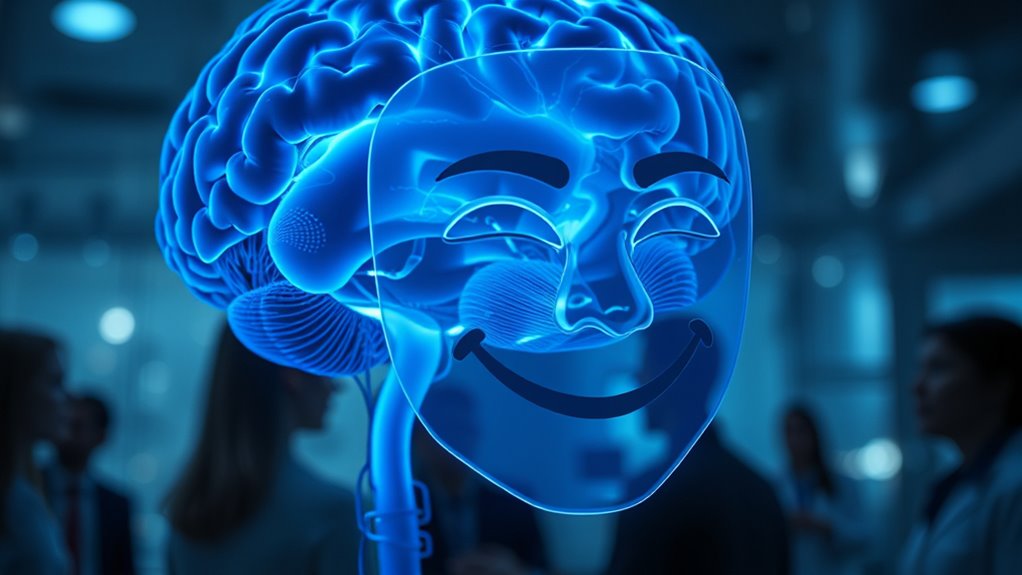
As researchers explore the neurological underpinnings of lying, they uncover intriguing insights into how our brains respond to deception. Here’s what they’ve found:
- Habitual liars show distinct neurological patterns that reveal how lying frequency impacts brain function.
- The complexity of human cognition makes it tough to develop practical lie detection methods.
- Differences between instructed and spontaneous lies highlight the need for tailored detection approaches.
- Current neuroimaging technologies face challenges in translating group averages to individual assessments.
These findings emphasize the intricate relationship between truth and deception, suggesting that understanding our neurological responses can pave the way for more effective lie detection methods.
However, limitations still linger, urging further exploration in this fascinating field.
The Role of Artificial Intelligence in Deception Detection

Artificial intelligence is changing the game in lie detection by recognizing patterns that humans might miss.
With machine learning algorithms improving accuracy and objectivity, you can see the potential for more reliable assessments.
However, it’s vital to reflect on the ethical implications of relying on AI in such sensitive situations.
AI Pattern Recognition Advances
While traditional methods of lie detection often rely on subjective interpretation, advancements in AI pattern recognition are transforming how deceit is identified.
AI’s ability to analyze verbal and nonverbal cues with precision enhances accuracy in detecting deception.
Here are some emotional implications of this technology:
- You might feel a sense of relief knowing AI can uncover hidden truths.
- The fear of being deceived could lessen as AI tools improve.
- Trust in the justice system may grow with more reliable evidence.
- The idea of a future where lies are exposed could inspire hope.
Machine Learning Accuracy Potential
Machine learning holds considerable promise for improving the accuracy of deception detection. With algorithms showing about 69% accuracy, they’re already outperforming human judges in detecting lying.
You might appreciate how AI systems can analyze subtle patterns in both verbal and nonverbal communication that humans often overlook, enhancing detection effectiveness. This integration marks a shift toward evidence-based interviewing strategies, focusing on inconsistencies in suspects’ statements.
Ongoing research aims to refine these AI methods, pushing for even higher accuracy rates in real-world applications. As machine learning continues to evolve, its role in deception detection could lead to more reliable tools, considerably improving truth assessments in various settings.
Embracing this technology might just transform how we approach lie detection.
Ethical Implications of AI
As AI technologies enhance accuracy in lie detection, they also spark important ethical discussions. You might wonder about the implications of using AI in such sensitive areas. Consider these points:
- Privacy: How do you feel about your personal data being analyzed without your knowledge?
- Consent: Are you comfortable with AI determining your honesty in high-stakes situations, like job interviews?
- Bias: What happens if the AI misinterprets your cues due to skewed training data?
- Oversight: Who guarantees AI’s decisions are fair and transparent?
Navigating these ethical implications is vital as we balance the benefits of AI’s accuracy with the potential risks to individual rights and civil liberties. Additionally, understanding the role of ethical guidelines in ensuring responsible AI usage is essential in maintaining trust among stakeholders.
Your voice matters in shaping responsible use of this technology.
Behavioral Indicators of Deceit
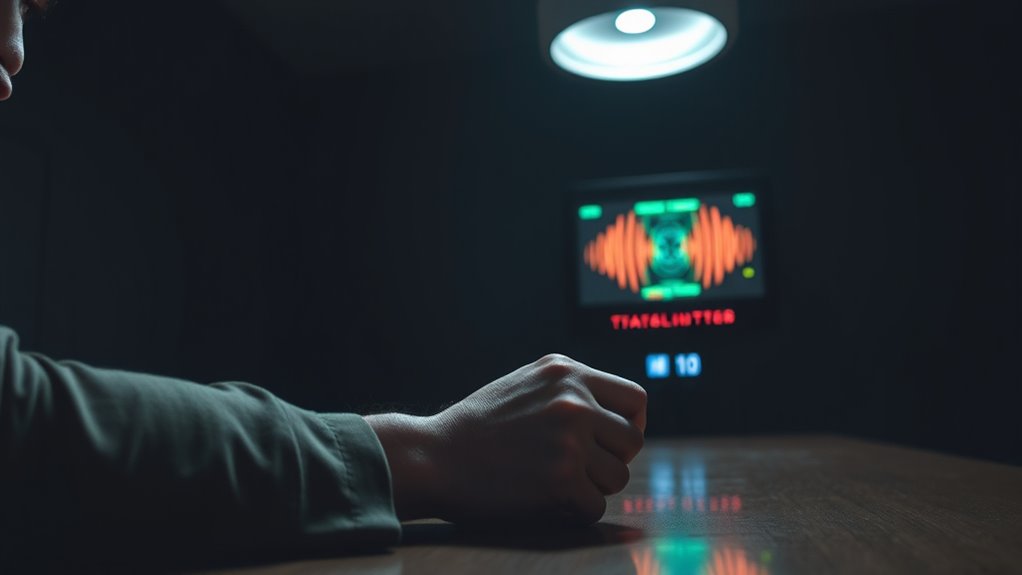
Although you might instinctively look for certain signs to detect deceit, understanding behavioral indicators of lying can be more complex than it seems. Observable signs, like micro-expressions or nervous habits, may hint at dishonesty but aren’t definitive proof.
Emotional reactions, such as sweaty palms or dry mouth, can arise from anxiety, complicating your ability to interpret nonverbal cues accurately. Research shows that relying solely on body language or gaze aversion often misleads you into thinking innocent behavior is deceitful.
Establishing a baseline behavior for individuals is essential; deviations from this norm might suggest deceit, but they don’t guarantee it. Always exercise caution when interpreting these indicators, as their effectiveness is only slightly above random guessing.
Challenges in Interpreting Signs of Lying
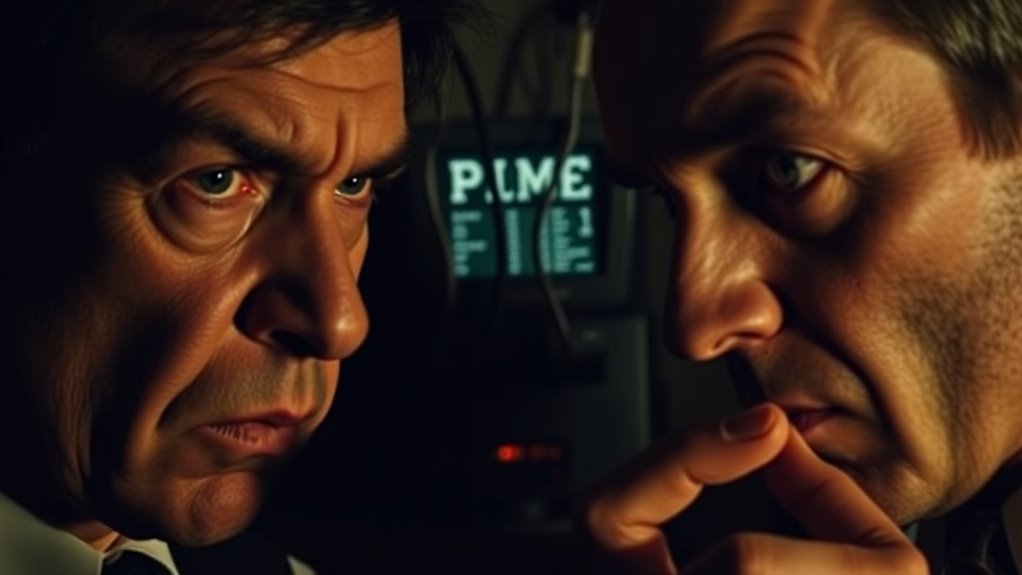
Interpreting signs of lying presents its own set of challenges, even when you’ve identified potential behavioral indicators. You need to take into account several factors that complicate lie detection:
- No single sign reliably confirms deceit; context matters.
- Emotional responses, like sweaty palms, can signify anxiety, not just lying.
- Micro expressions may reveal true emotions but can be misleading if they appear asymmetrical.
- Cultural beliefs about nonverbal cues, such as gaze aversion, often mislead interpretations.
Understanding these complexities is significant. Deviations from a person’s established baseline behavior can suggest deceit, but without corroborating evidence, interpreting signs of lying remains fraught with uncertainties.
It’s essential to approach each situation with a nuanced perspective to avoid misjudgments.
Frequently Asked Questions
What Are the Modern Methods of Detecting Deception?
Modern methods of detecting deception include polygraphs that measure physiological responses, though they’re often unreliable.
You might also encounter artificial intelligence tools analyzing speech patterns and body language, achieving about 69% accuracy.
Cognitive load techniques could help by making lying more challenging, while newer interview strategies focus on gathering detailed accounts and confronting suspects with evidence.
These evolving methods highlight the ongoing quest for effective ways to discern truth from falsehood in various situations.
What Is the Current Status of Research on Lie Detection?
Currently, research on lie detection highlights the complexities of human behavior. You’ll find that individual, cultural, and situational factors greatly impact the effectiveness of detection methods.
Modern techniques, like polygraphs, face criticism for their reliability, often performing slightly better than random guessing. Advances in AI show promise, achieving around 69% accuracy, but neurological methods still struggle to provide practical solutions.
Ongoing research is vital for developing more reliable deception detection strategies in real-world situations.
How Accurate Are People in Judging Truth and Deception?
Judging truth and deception is like trying to read a book in the dark; it’s tough to see clearly.
You might only get it right about 54% of the time, which is barely better than flipping a coin. Even trained professionals often struggle, relying on unreliable cues.
Emotional responses can further cloud your judgment, making it hard to distinguish between honesty and deceit.
How Accurate Is the AI Lie Detector?
AI lie detectors have shown an accuracy rate of around 69%, which is better than many humans but still isn’t perfect.
While machine learning algorithms can spot subtle patterns that you might miss, they struggle with the complexities of human behavior.
You’ll find that current methods need further refinement to be truly reliable.
Ongoing research aims to improve these technologies so they can be more effective in real-world situations.
Conclusion
In a world where deception is often subtle, understanding lie detection is essential. Did you know that studies show up to 80% of people believe they can spot a liar just by observing their behavior? Yet, as we’ve explored, the truth is far more complex. The interplay of technology, human psychology, and behavioral cues makes detecting deceit a challenging task. As you navigate this intricate landscape, remember that not everything is as it seems.









